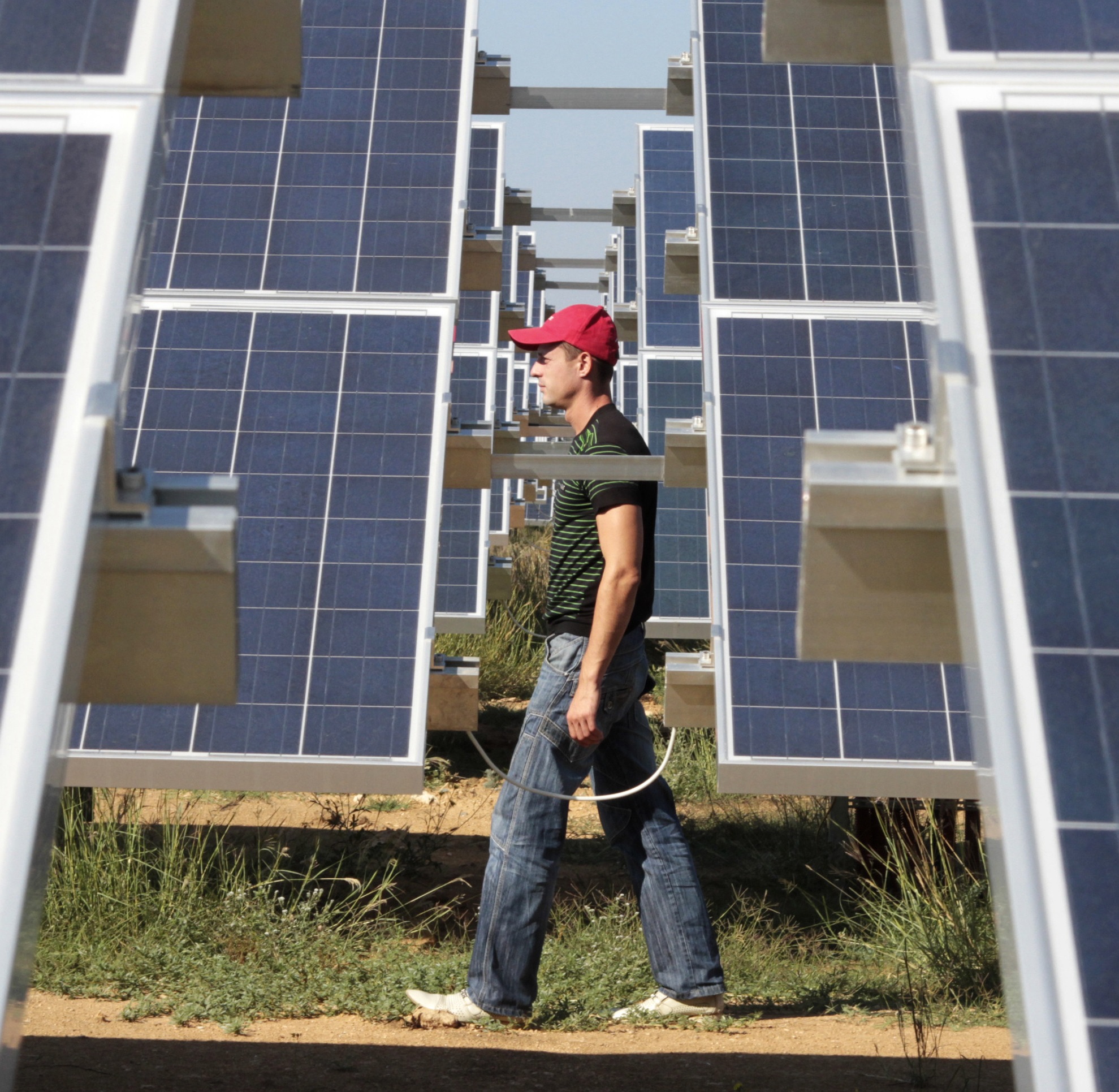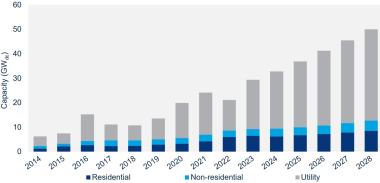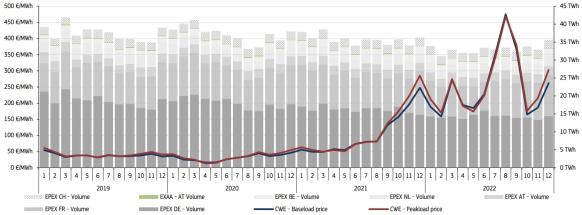US installs record 6.1 GW of solar in Q1; EU ends limits on solar, wind revenues
The solar news you need to know.

Related Articles
U.S. installs record solar capacity as supply woes ease
The U.S. installed a record 6.1 GW of solar capacity in the first quarter, including 3.8 GW of utility-scale plants, as supply chain challenges eased and developers completed delayed projects, the Solar Energy Industries Association (SEIA) and Wood Mackenzie said in their latest quarterly market report.
U.S. solar capacity is forecast to triple to 378 GW by 2028, Wood Mackenzie said, as tax incentives in the Biden administration's Inflation Reduction Act (IRA) accelerate growth.
Forecasts U.S. solar installations
(Click image to enlarge)
Source: Wood Mackenzie, May 2023
Last year, a combination of customs delays, tariff uncertainty and soaring global demand hiked solar costs and delayed projects.
The Biden administration's Uyghur Forced Labor Protection Act (UFLPA), which prevents the import of goods produced using forced labour in China’s Xinjiang Province, saw many solar panels blocked by U.S. customs.
Importers must prove the entire value chain is free from production in Xinjiang and a lack of precise guidance from U.S. Customs and Border Protection (CBP) meant panels were taking months to clear customs, industry experts said.
In March 2023, Reuters reported more solar shipments were passing through customs due to clearer federal guidance.
The inflation act includes tax credits for manufacturing and there is already over 16 GW of U.S. module factory capacity under construction, SEIA and Wood Mackenzie said in their report.
Module production capacity is expected to rise from 9 GW currently to more than 60 GW by 2026, the report said.
European Commission ends limits on renewable energy revenues
The European Commission (EC) will not extend limits on renewable energy revenues beyond this month, ending the emergency measures implemented to combat soaring energy prices following Russia's invasion of Ukraine.
The unprecedented measures, agreed by EU members in September, limited revenues from solar, wind and nuclear power generation to 180 euros/MWh from December until the end of June.
The intervention capped revenues at less than half the market prices at the time, but far above the costs of most solar and wind assets. In August, the benchmark German annual power contract had soared to over 1,000 euros/MWh ($1169/MWh) as gas prices rocketed.
Day-ahead power prices in Central Western Europe
(Click image to enlarge)
Source: European Commission's quarterly electricity market report
Profits above the price limits have been collected by member state governments and used to reduce consumer bills. Alongside this, EU members agreed to reduce peak electricity demand over the period.
"The Commission confirms that it will not propose a prolongation of these crisis measures," the EC said in a statement on June 5.
The electricity price spikes observed throughout 2022 are considered "less probable to occur in the upcoming winter," the commission said. Electricity prices have fallen below 80 euros/MWh and gas prices have fallen and stabilised, the EC noted.
EU members have sliced their dependence on Russian gas and in March EU members agreed to extend a target to curb gas demand by 15% for a following 12 months.
Germany and several other EU member states imposed lower power revenue limits than the EU measures, to help fund consumer protection plans.
Germany applied a temporary windfall tax on renewable energy revenue above 130 euros/MWh until April 2024. Germany's tax threshold remains higher than the cost of developing solar and wind power, but it must not be extended beyond the current deadline, Claus Urbanke, Vice President Wind, Solar & Storage Development Germany at operator Statkraft, told Reuters Events last month.
“It would destroy confidence in the investment climate in Germany," he said.
Italy must add 190 GW of renewable energy to meet G7 pledge
Italy must install a further 190 GW of renewable energy capacity by 2035 to meet its commitment to a net zero power system as part of the G7 group of most industrialised nations, according to a new report by climate change think-tank ECCO and consultancy firm Artelys.
In May, the G7 group, comprising United States, Canada, United Kingdom, Germany, Italy and Japan, committed to phase out coal plants and decarbonise their power sectors by 2035.
Italy remains heavily dependent on fossil fuels, producing over 50% of its power from gas, oil and coal plants. The country will need 250 GW of installed renewable capacity by 2035 to meet its targets, ECCO and Artelys said in their report.
Italy boasts strong solar resources in the south but projects have been held back by bureaucratic permitting processes. The country installed only 2.5 GW of solar and minimal wind in 2022.
Installation rates will need to "multiply by seven by 2030, and by more than eight by 2035," the report said.
To speed up deployment, European Union officials have provisionally agreed to set a two-year maximum for permitting new renewable energy projects and require member states to create accelerated deployment areas and define solar and wind as projects of overriding public interest.
Reuters Events


